Once upon a time I was going to open a used cookbook store. This was back in the day when used bookstores still existed. Most, now, with a few exceptions, are Gone With the Internet. (Not a bad title, don’t you think, for a latter-day movie spectacular about change and devastation and sweeping history?)
But back then there were still such things as used bookstores.
I worked in a low-level, not much appreciated (so I thought) function in BIG OIL. Going to work had become dread and depression, especially on a Monday morning. I’d spent so many pleasant hours, days, months, years shopping in used bookstores, I was sure owning one would be paradise. Of course my realist self acknowledges that there might have been troubles even in that paradise, but “realistic” didn’t much enter in to my thinking at the time.
And so I started “gathering stock,” a justification phrase, which translates, for practical purposes, to “buying, buying” – the part I’ve always been better at anyway. I bought hundreds of volumes, sometimes in quantity, sometimes in multiples, convinced I saw bargains that could be turned into profits – unlike the shopkeepers I bought them from, who must not realize the true values of the treasures they had. I remember once in Cincinnati practically clearing out the cookbook section of one shop, which had just put out the collection of a now downsized or departed former diplomat, whose cookbook passion had seemed to equal mine. And how many gems came to me from Half Price Books, back in the days when there was still one of their shops in Montrose (and when I sometimes spotted Edward Albee also browsing there)?
Why cookbooks? I’d always been interested in what’s called “antiquarian books,” but why that particular genre? Well, I loved to eat (look at me and say you doubt it!), and I liked to cook, and cookbook snobbery (to say “appreciation” would not be pointed enough) abounded in those post-Julia Child, pre-Allrecipes internet, days. I was sure it was a growing market, and that I could find a niche in it. It didn’t have to be a very big niche; just big enough to hold me.
So I continued buying, buying, and I acquired some beautiful things – “for stock,” of course. Including the true first edition of Mastering the Art of French Cooking (Knopf, 1961), in which Julia Child is NOT listed as first author (only the second printing, but still nice). If you’ve dipped into any of the tsunami of Julia books/tv shows/movies you know that there was lots of trouble in her French Cooking paradise, at the beginning especially, and that she and her co-authors (one in particular) had some friction to smooth about who got listed how on their one-day-to-be-acknowledged masterpiece. That subtle author order is part of the story, and it’s nice to have a volume that shows it.
The English writer/cook, Elizabeth David, and her splendid books, became another early passion. In a way like Child, David spent the World War II years traveling to exotic places, involved in what may have been spy-related activities. And like Child, the strange foods she encountered beguiled her.
After the war, returned to a dismal England, where food rationing didn’t finally end until 1954, David found herself dreaming (both days and nights) of the foods she’d eaten on her travels, and could not then eat at home. Her dreams turned to writing, and even though many of the ingredients she listed in her recipes could not be bought in England, even for fortunes, her books found an audience among her countrymen, with other fantasy feasters, also longing for French and Mediterranean delights, remembered or only longed for – but something, anyway, to help them keep going through the bleak years. And, as a bonus, David’s publisher, John Lehman, had the stroke of genius to ask his friend, John Minton, to illustrate the books. In the early 1950s, Minton’s jackets burst like Southern Sun through the grey British fog – and they still do.
Another fun find: Madame Rombauer’s Cookery Book – better known by it’s true title, The Joy of Cooking, by Irma Rombauer. I have many copies of successive editions of that classic (all for “stock,” of course), but this one is my favorite. Used almost to death, perhaps, rebound, lovingly (and tongue-in-cheekily) hand lettered on the new spine the way one particular devoted cook thought of it.
There’s the lovely little Shaker Cook Book, which once belonged to artist, Mark Tobey, with rows of tiny figures on the cover, somewhat like those in some of Tobey’s own paintings.
And the Alice B. Toklas cookbooks, as much memoir and gossip as recipes, though there are recipes too – not, however, the one for her famous “Hashish Fudge” in the copies I own. That’s only in the English edition. Harper, the American publisher, decided that America, in 1954, wasn’t ready for the likes of that!
This sort of listicle could mount into the hundreds – as least to the number of the cookbooks I have, since each has it’s story. My shop never happened, and a few years ago, desperate for space (to shelve all the other books stacked high), we donated a score of boxes full of cookbooks to the culinary library at Houston Community College. I hope some young cooks there have enjoyed them, and found inspiration.
I’ll end with one I couldn’t bear to part with, not because it’s such a great cookbook – though it may very well be fine; I’ve never cooked from it.
I kept it for the inscriptions, from Helen to Mitzi: it was a gift. But not, apparently, a treasured one, given with love to share that joy of cooking. In fact, reading the inscriptions – there are several – one wonders why Helen gave it at all; and what Mitzi thought about the choice. I think it speaks volumes (strange, convoluted volumes) about their friendship and how food entered in. Read them and judge for yourself:
I find it telling that the only recipes laid in (not printed in the book, but added by the cook) are those for Martinis and Manhattan Cocktails. But maybe that makes sense: reading those inscriptions, you wonder if maybe Helen had drunk too much – or maybe Mitzi decided she hadn’t drunk enough. Either way, Bottoms Up!

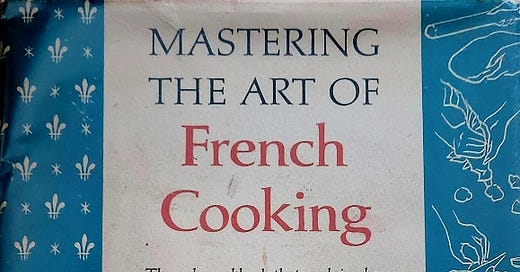



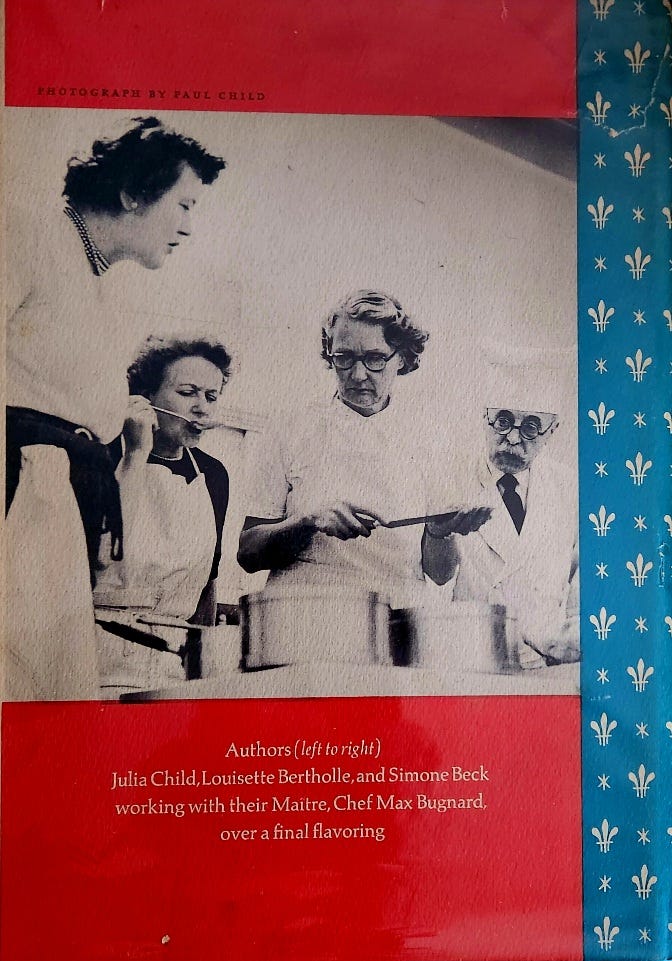

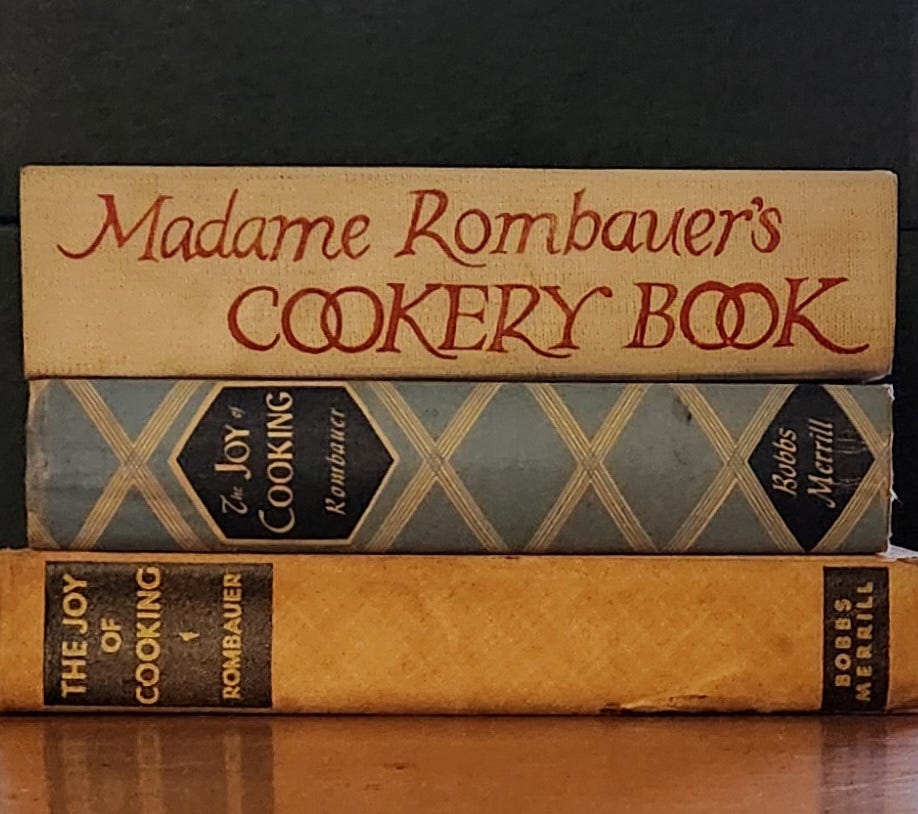
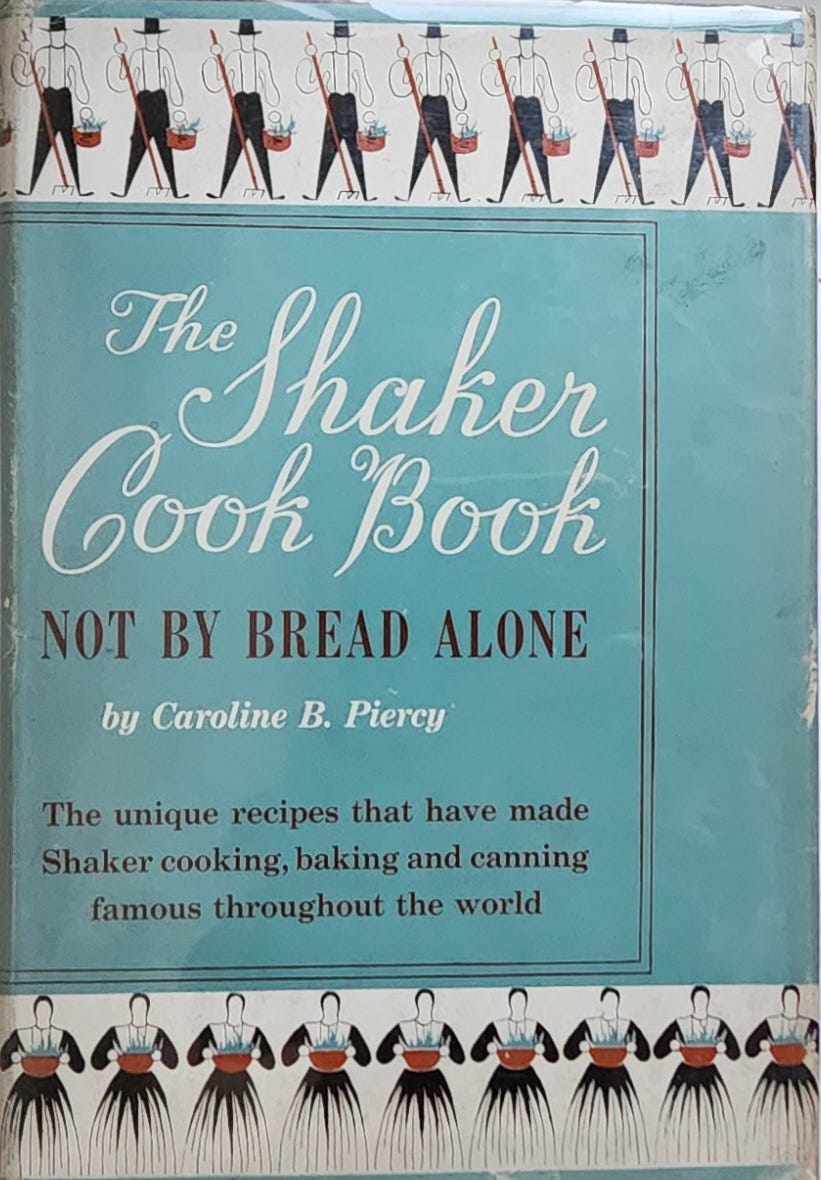
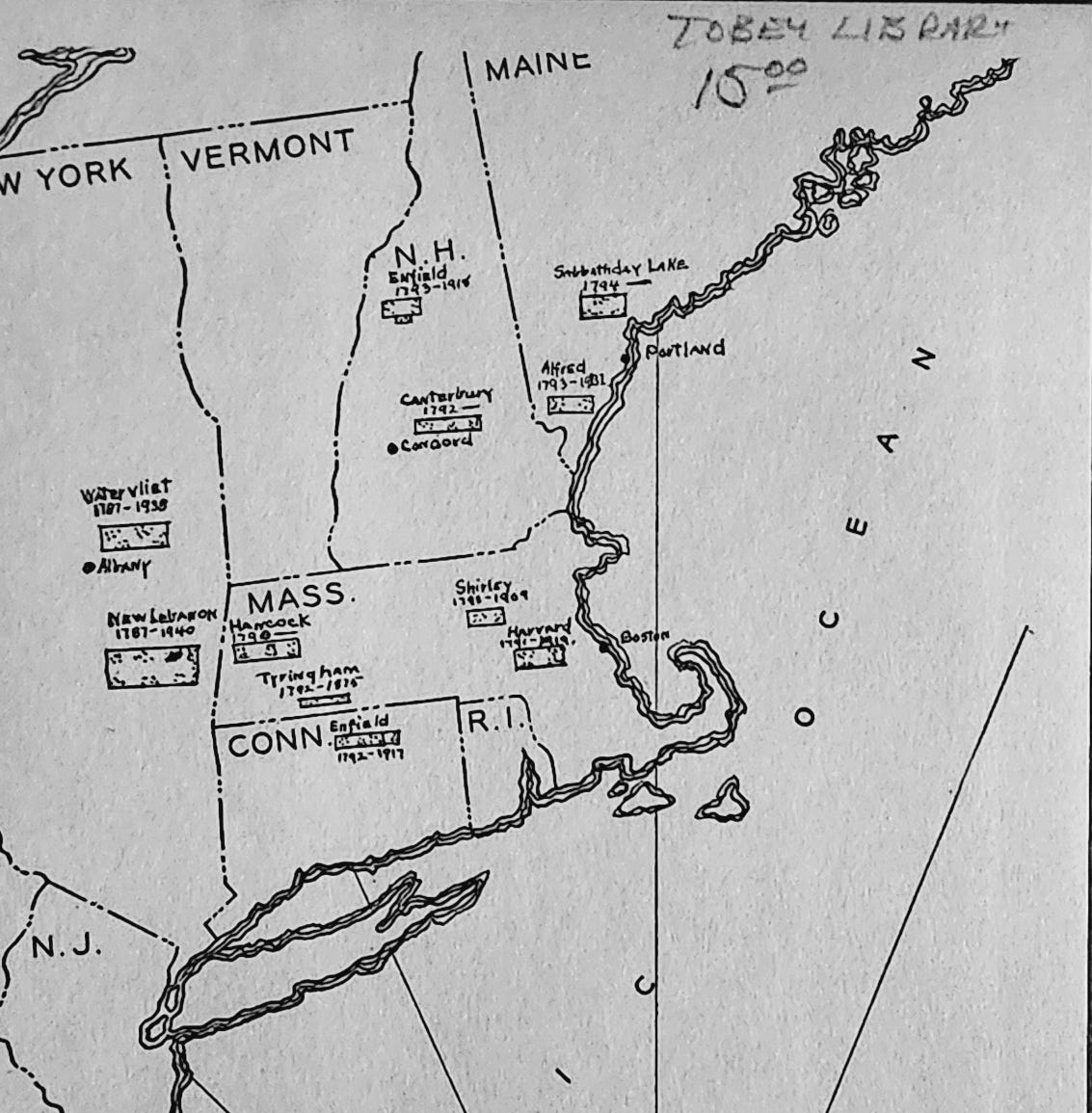
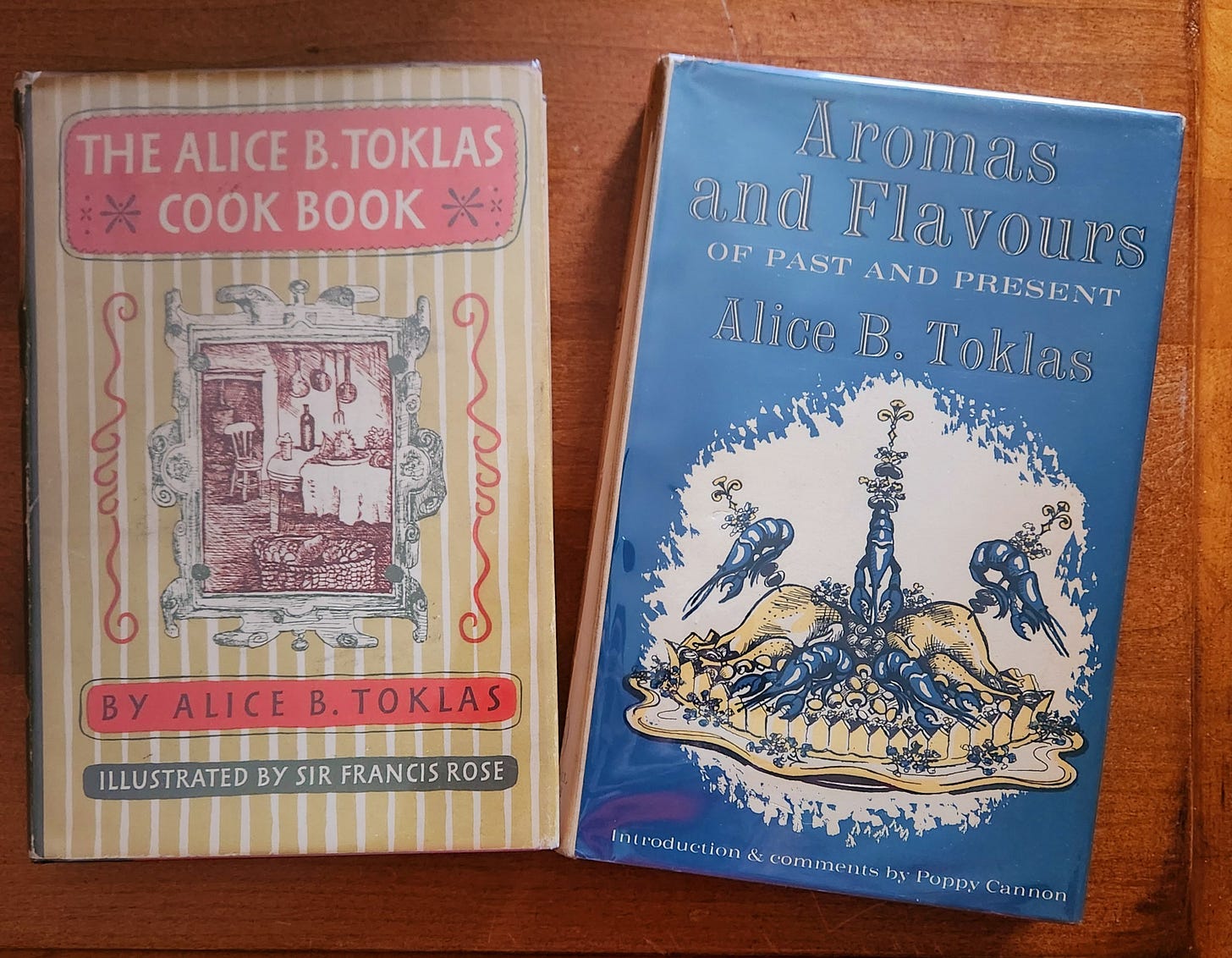
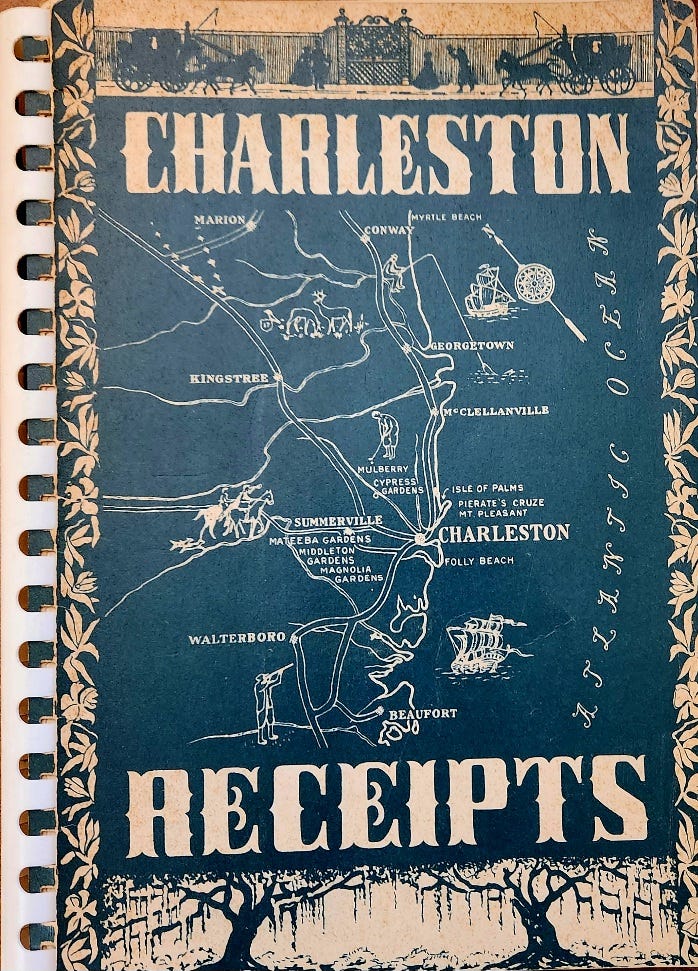

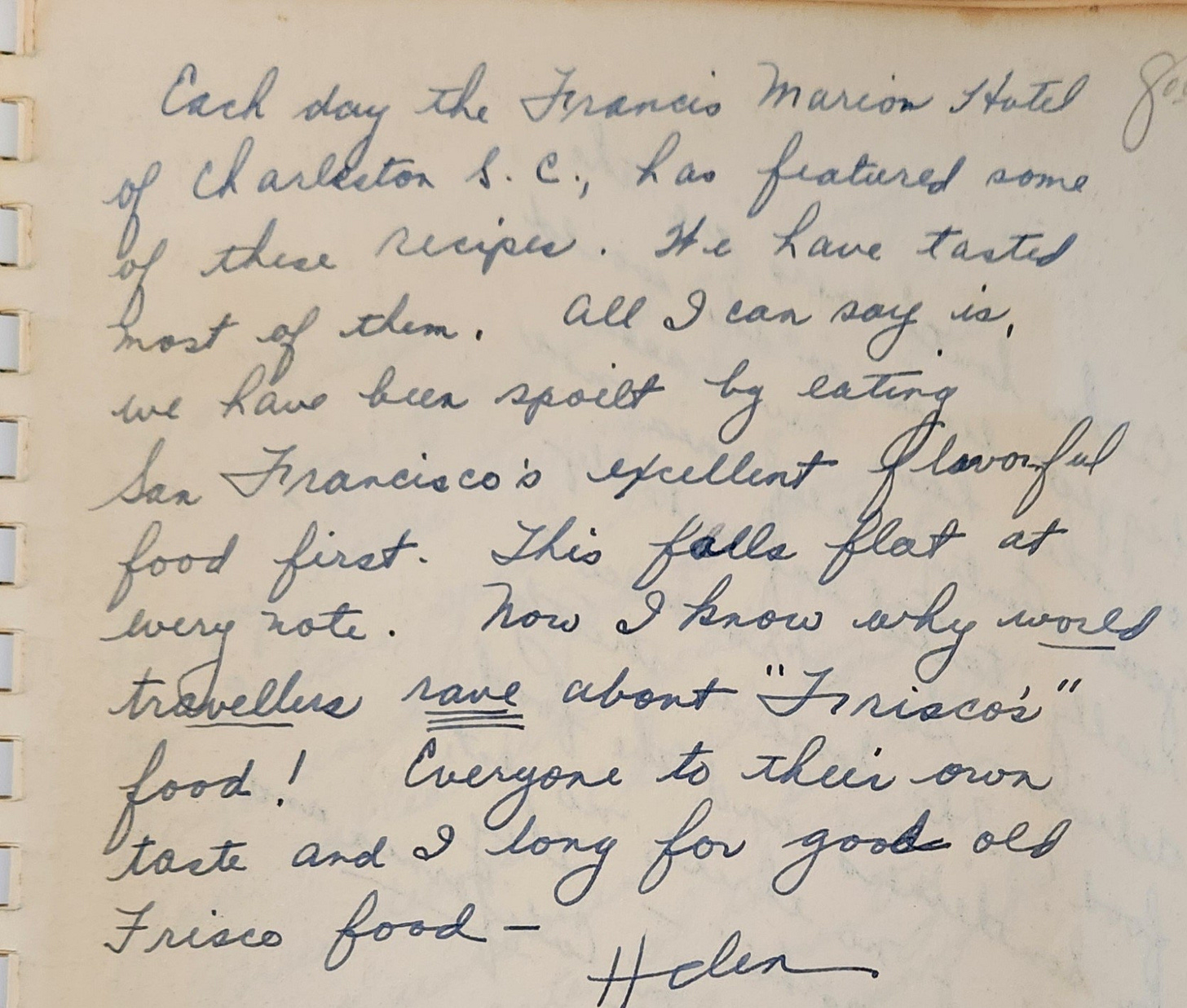
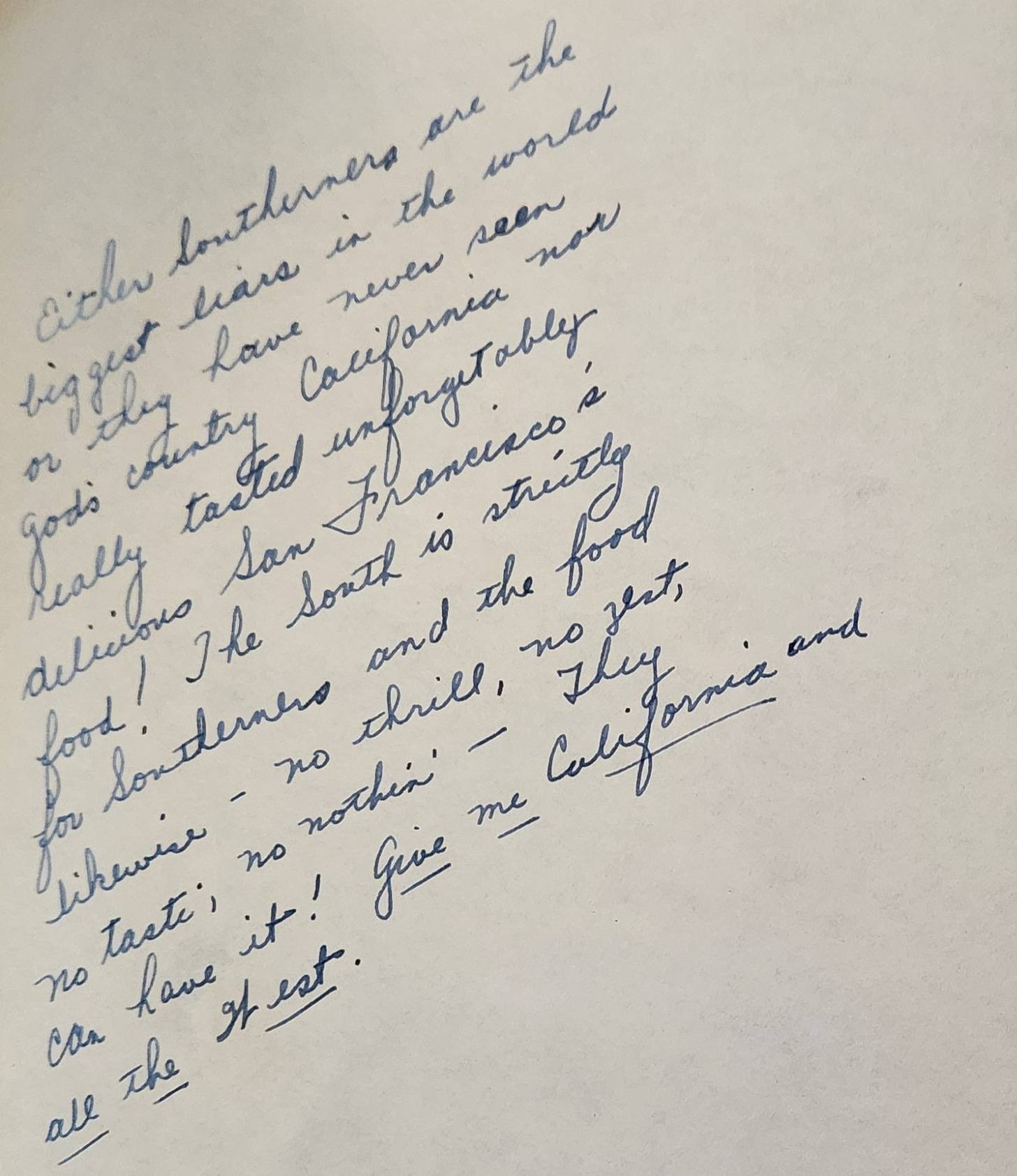
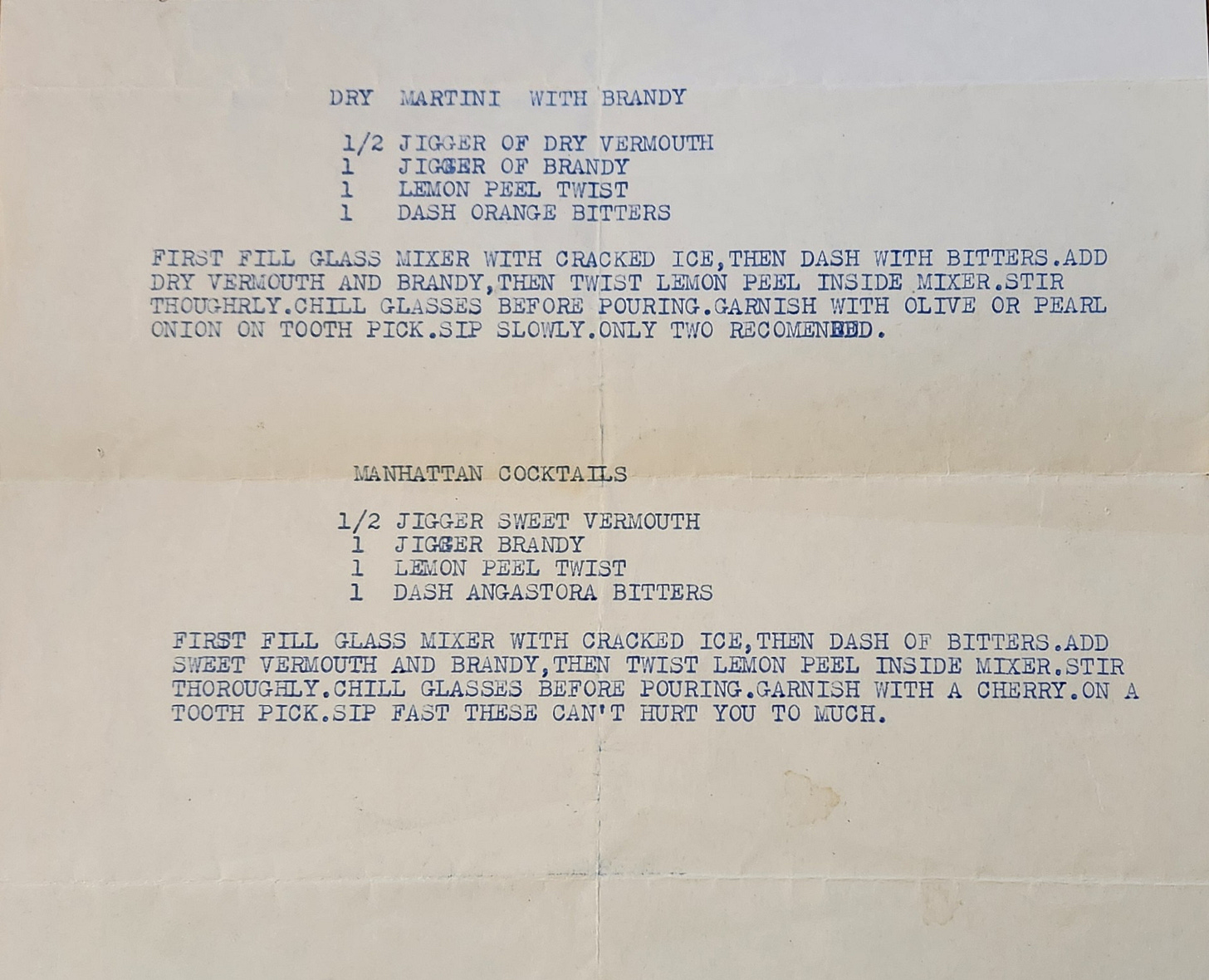
The inscriptions are a hoot! Makes me think about a Road Kill cookbook I gave my brother-in-law one year. In Texas that's a real thing you know.
As an eBay seller I did make some actual money on a signed Justin Wilson Cajun cookbook one time. "I guarontee".
Now a days my best cooking is with the food I find dumpster diving. There is an Air B&B at the corner and the folks are either here for medical care in the lauded Texas Medical Center and have suddenly bought out Whole Foods of all their health food (sadly, too little too late) or they are here in Houston at a convention boozing it up. In either case, when they leave they can't seem to take it all with them. Consequently I currently have an internet recipe for rum cake with glaze that I'm about to bake with about a quarter of a bottle of Captain Morgan spiced rum.
Oh, by the way, have you read MFK Fisher and her cook books? She was my mom's favorite.
Randy
I forwarded this to friends. I liked it very much especially the inscriptions. Love cookbooks too.